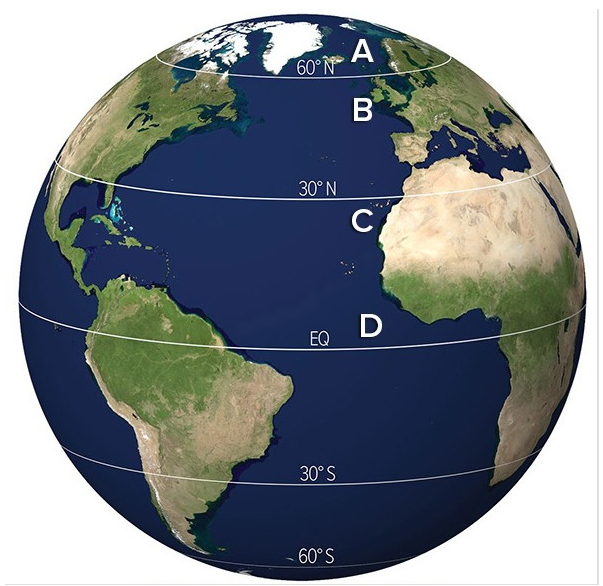Why do we find evidence of strike-slip and normal fault stress regimes in addition to the thrust-fault regime in active (contractional) orogens such as the Himalaya and Andes?
What will be an ideal response?
Ans: There could be many reasons for this. Here are some: Many orogenic belts result from slightly oblique convergence, which is partitioned into pure contraction and localized strike-slip motion (strike-slip faults). Strike-slip faults may also result from blocks escaping laterally during convergence. Elevated parts of the orogen may collapse gravitationally to form normal faults.
You might also like to view...
At which location would the Coriolis force deflection be the least?

A) A
B) B
C) C
D) D
Compare and contrast the artiodactyls and the perissodactyls. What will be an ideal response?
Cloud seeding is most likely to be successful in areas with:
A) flat terrain. B) small, rolling hills. C) a continual uplift of air. D) clouds that naturally contain some dry ice.
Continental polar air masses seldom influence the weather south of the Great Lakes
Indicate whether the statement is true or false